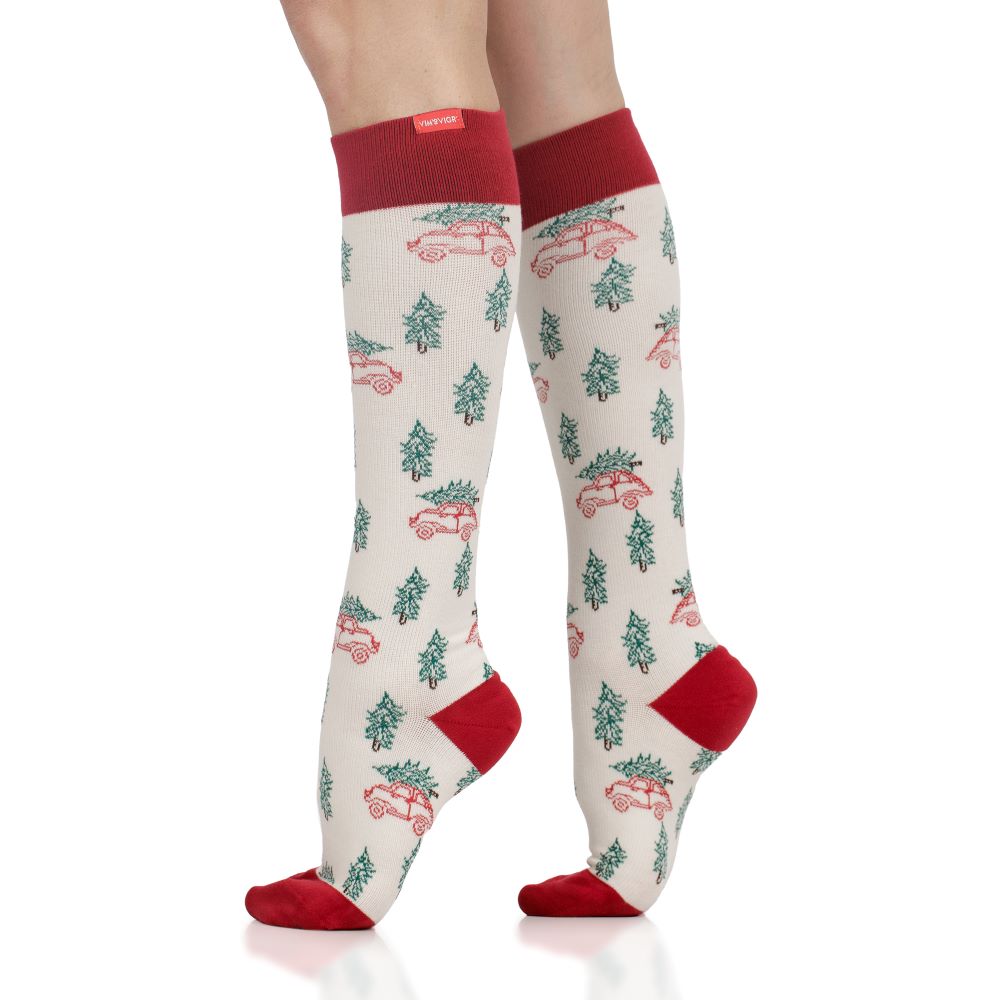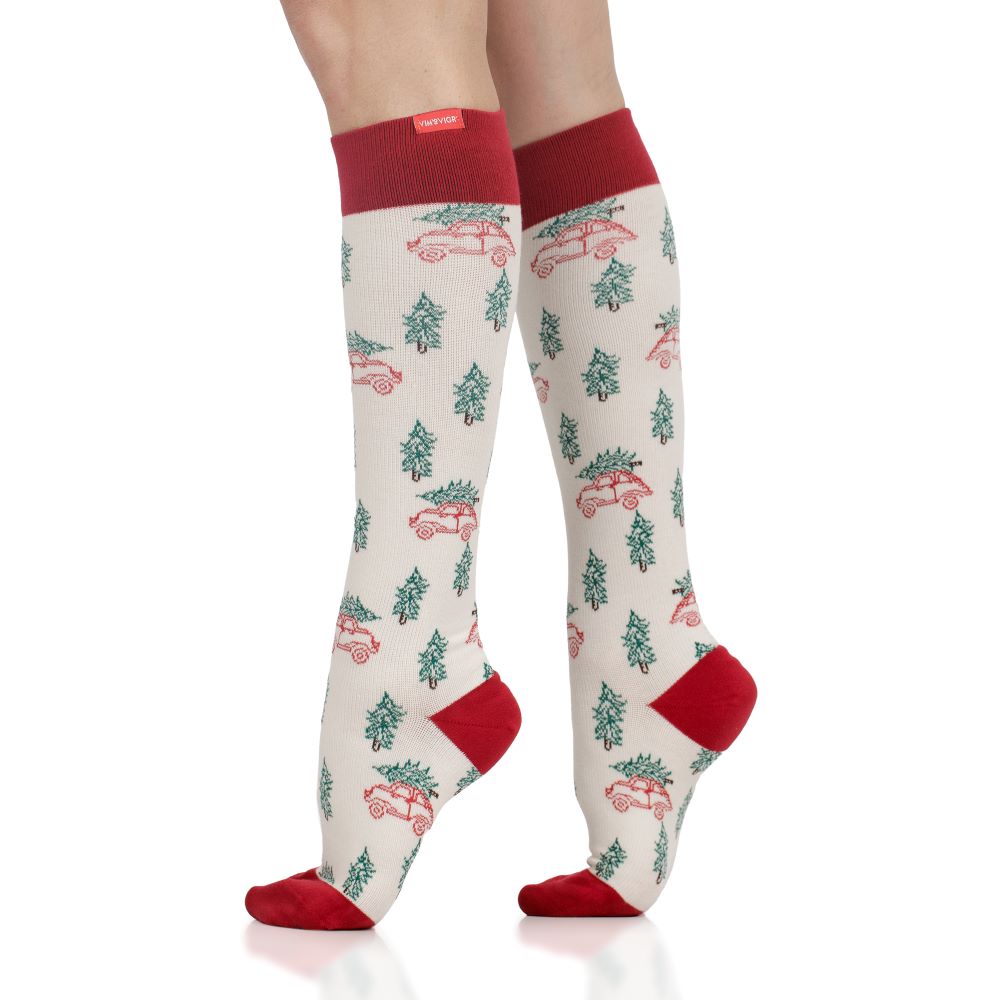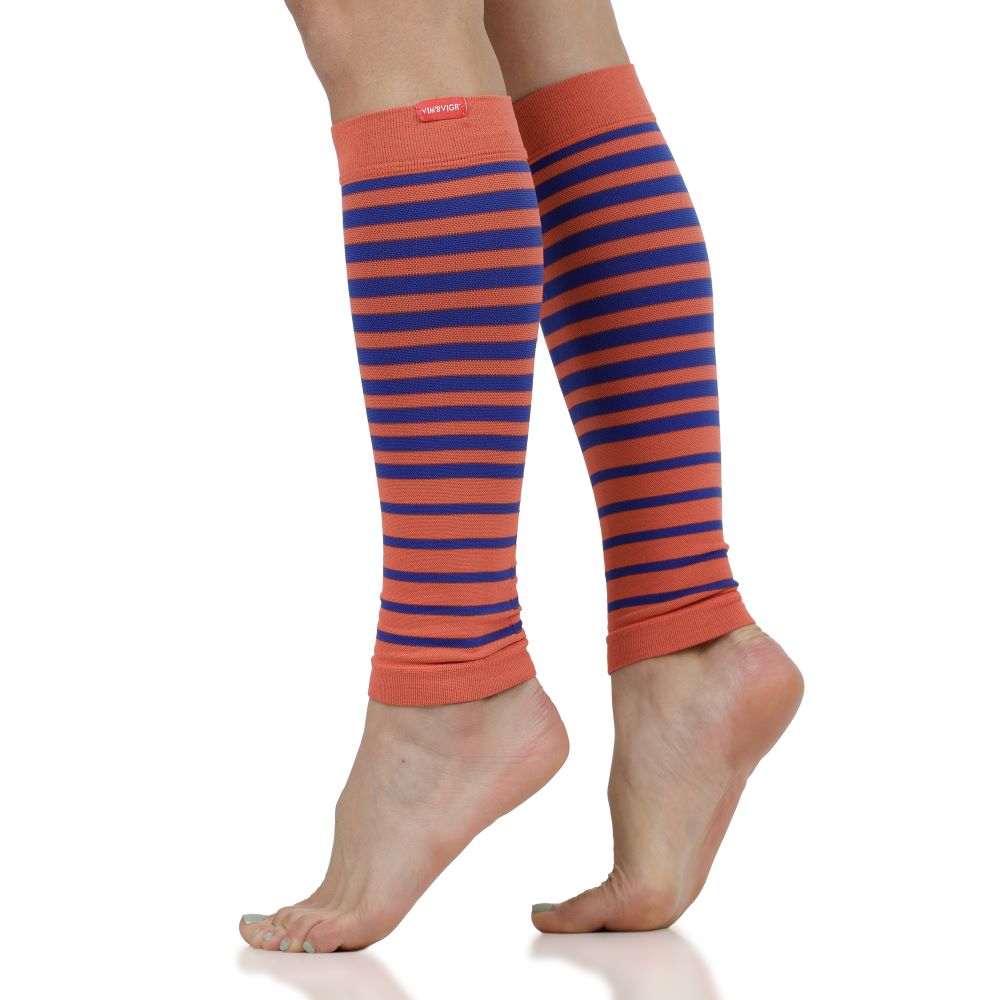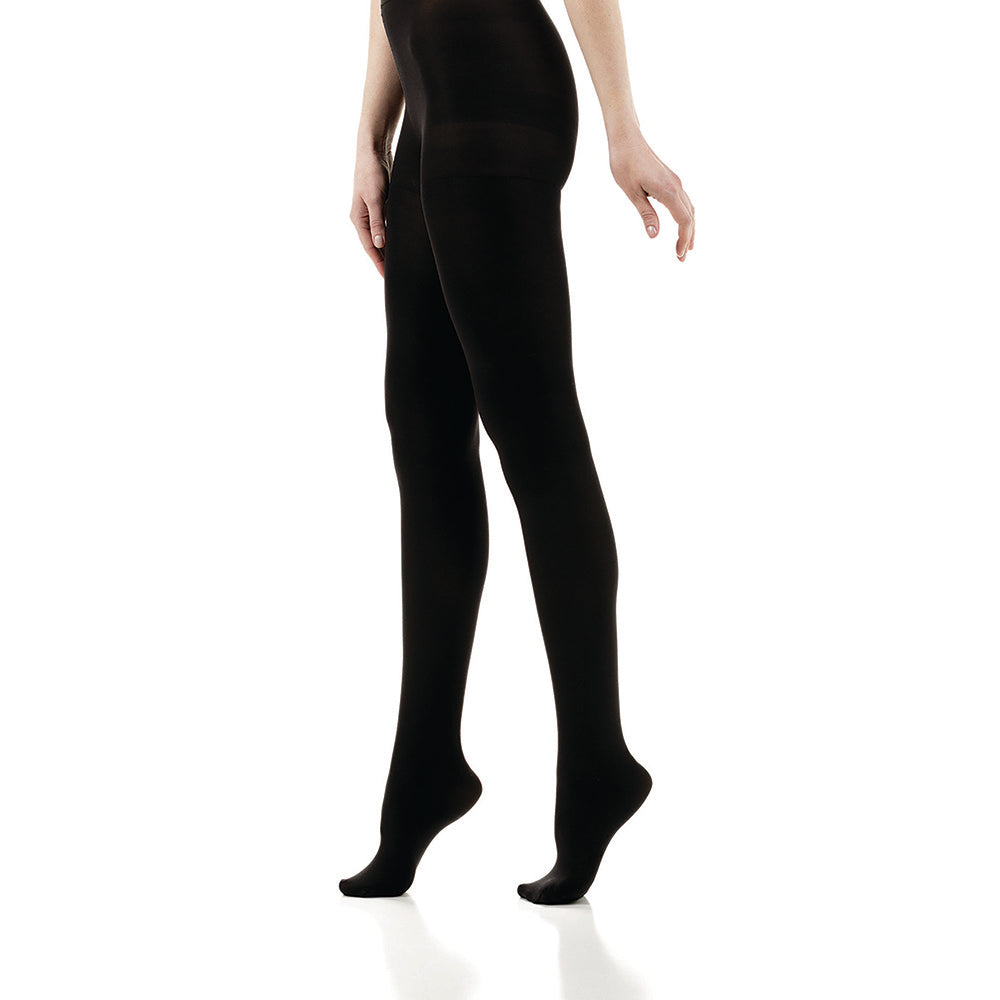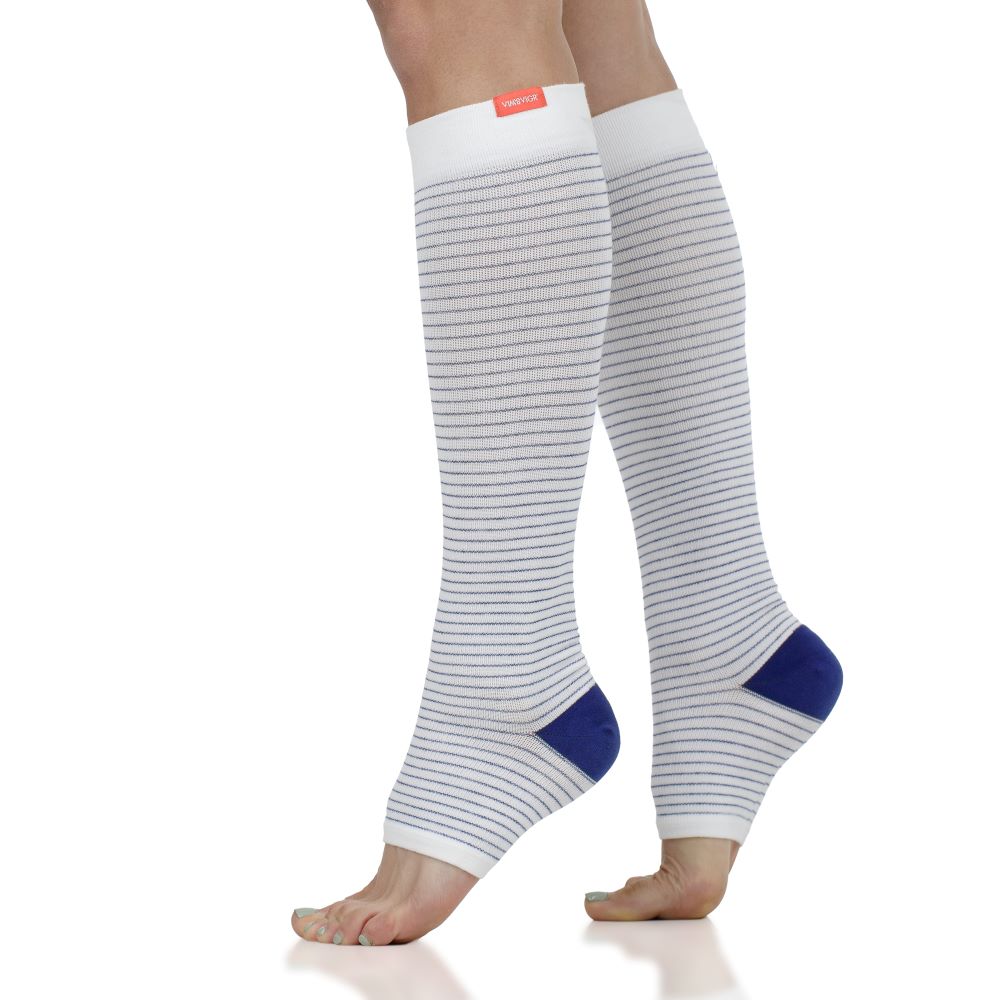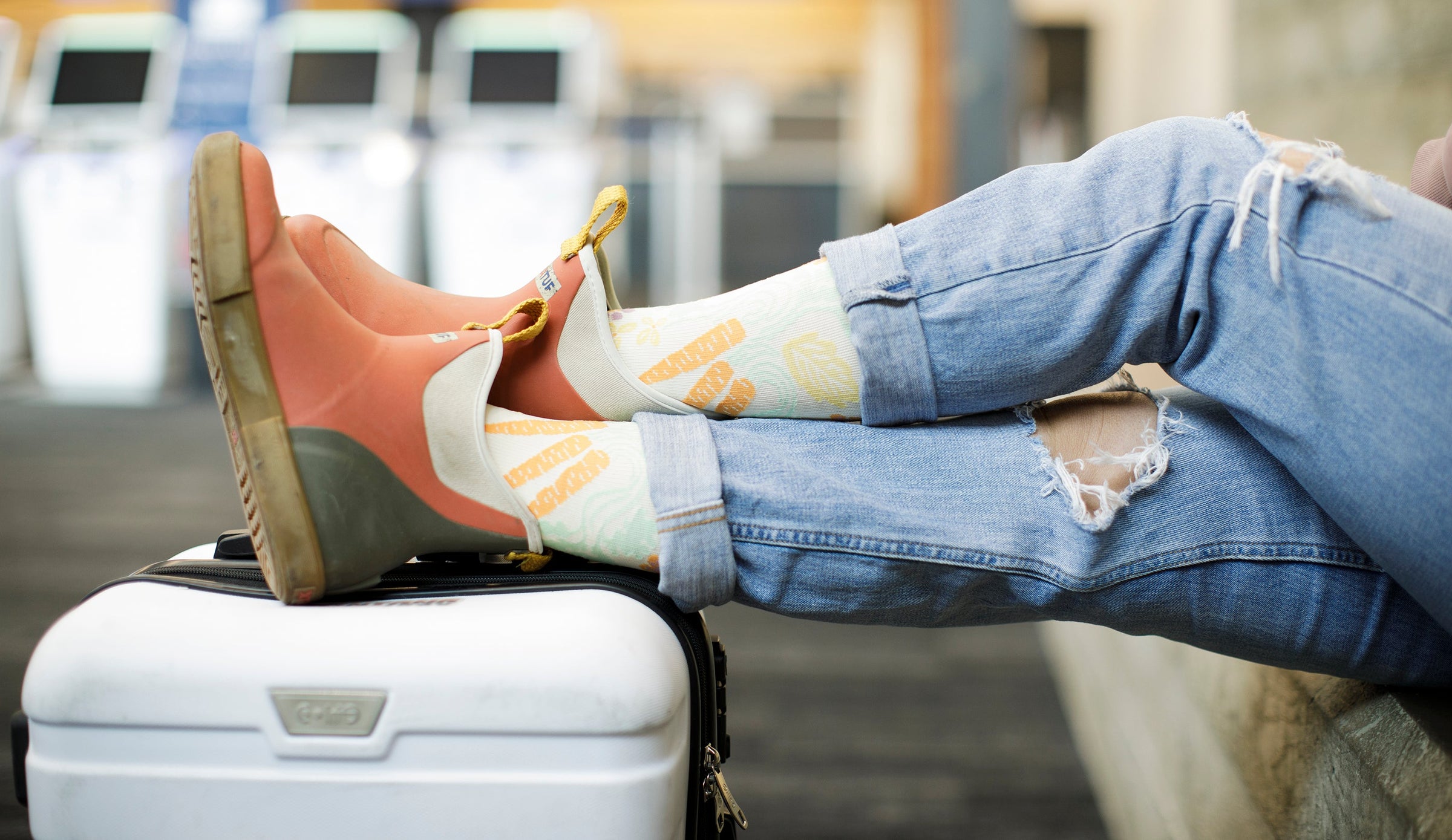
Compression Socks for Travel
Full-leg compression leggings engineered for comfort, circulation support, and all-day wear — with UPF 50 protection and a smoothing, stay-put waistband.
You’re headed on an adventure – maybe sunny beaches or an enchanting new city are on your itinerary. All that stands between you and your destination is a 10-hour flight or maybe a long day’s road trip. Whether you’re traveling by car, plane or train, wearing compression socks can play a big role in keeping you healthy along the way.
There are many health risks associated with sitting too long – especially when combined with the low pressure and humidity, cramped position, and dehydration common during lengthy travel. According to the CDC, “anyone traveling more than four hours, whether by air, car, bus, or train, can be at risk for blood clots.” Compression socks help reduce that risk by supporting healthy circulation throughout your journey.
"There's something to be said about arriving at a destination with ankles the same size as they were before takeoff... [VIM & VIGR] will do wonders for those running-to-catch-connecting-flight moments."
WHY WEAR COMPRESSION SOCKS ON LONG FLIGHTS?
Traveling by plane can leave your legs heavy and can increase your risk of deep vein thrombosis (DVT), a condition where blood clots form in a deep vein, usually in the legs. Most of us have also experienced swollen ankles and feet while traveling. Compression socks can provide relief from these symptoms, as well as protect you from the risk of DVT and related complications.
Even if you’re not traveling far, it’s a good idea to wear compression socks while flying. Not only will they help you feel your best, wearing compression socks for air travel are an easy & safe preventative measure to protect the long-term health of your legs.
"I’ve been using @vimvigr compression socks for more than a year now and even though I’m not flying [right now], I still need them for long road trips. I love their compression socks because they are fashionable and comfortable yet effective."
— Jessica Nabongo, 1st black woman to travel to every country
WHAT KIND OF COMPRESSION SOCKS DO I NEED FOR FLYING?
Graduated compression socks can help protect your legs while flying by applying gentle pressure that’s tightest at the ankle and gradually eases up your leg. Look for socks that are knee-high and offer at least 15 mmHg for maximum benefits.
WHEN TO PUT ON COMPRESSION SOCKS FOR FLYING
It’s recommended to start wearing compression socks before you board your flight or hop in the car for a long trip. Since it’s safe to wear your travel compression socks for 16+ hours, don’t worry about putting them on early in the day.
"I bought compression socks for the whole family for a 9-hour air flight. We all wore our socks except for my son in law who exited the plane with swollen ankles. The rest of us had no swelling. Needless to say, he wore his socks on the return flight. Comfortable, fun prints and they do the job! Great product!"
—Susan C.
WHAT LEVEL OF COMPRESSION SOCKS DO I NEED FOR FLYING?
The level of compression that’s best for travel depends on your health and comfort. 15-20 mmHg compression socks can benefit just about everyone by reducing swelling and energizing your legs. If you’ve had a DVT in the past or know you have family history of blood clots or vein & circulation issues, 20-30 mmHg compression socks may be the most comfortable and effective for you.









